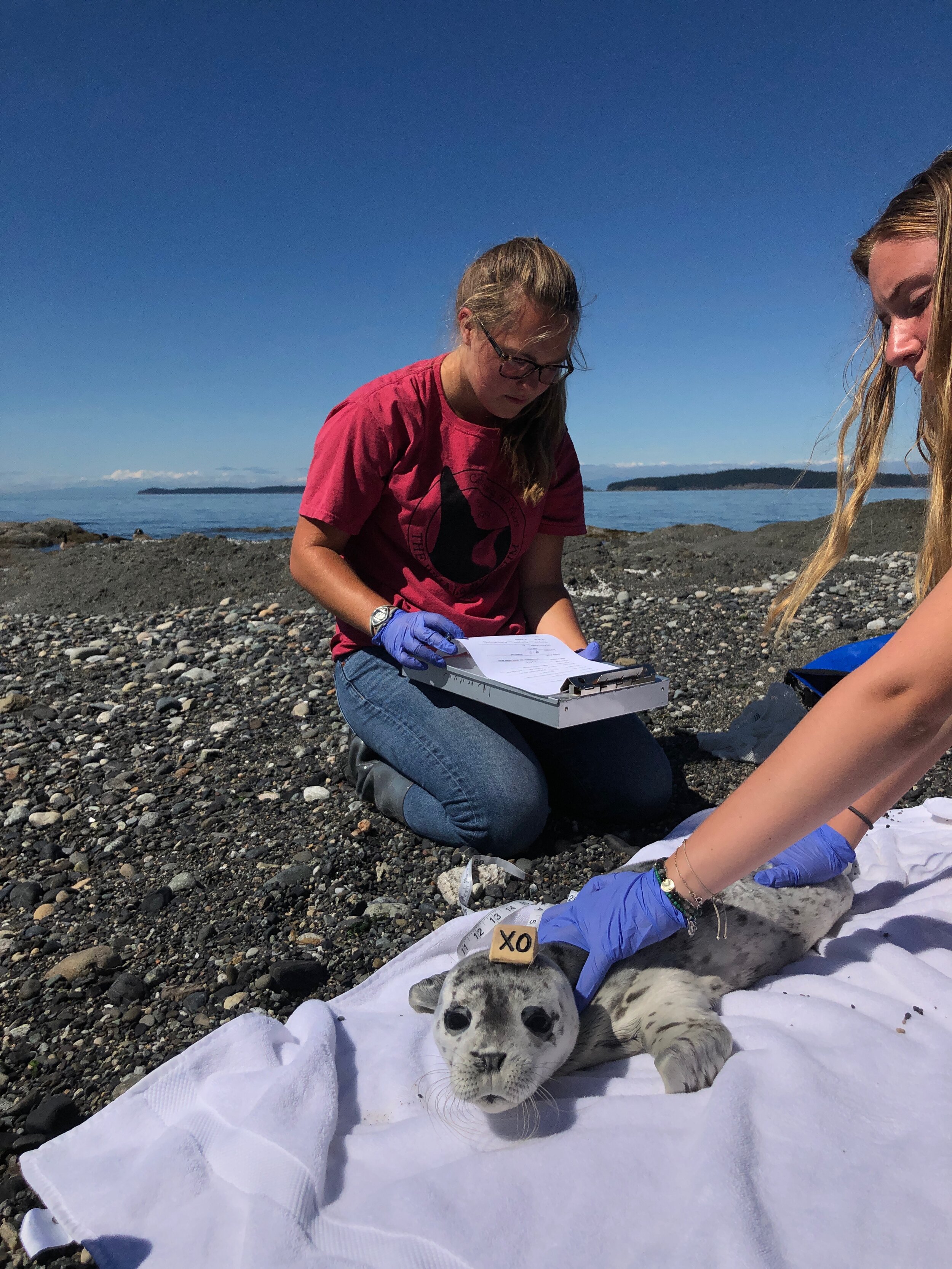Photo by Steve Bly
Scientists learn a lot about marine mammal health from stranded animals. Afterall, marine mammals don’t spend much time above water, so they’re pretty hard to study. Studying stranded animals teaches us about diseases that are important for marine mammal health and human health. But finding stranded animals is challenging, because everything from tides and currents to coastal conditions can determine where a dead animal might end up on shore. And are there really such things as stranding hotspots?
Well it turns out that, yes, there are hot spots where marine mammals are more likely to strand in the San Juan Islands. Led by Jennifer Olson, former coordinator of the Whale Museum’s Marine Mammal Stranding Network (now a faculty member at the Ocean College Research Academy), SeaDoc scientists helped look back over 12 years of stranding data to determine if there were stranding hotspots and what factors contributed to such sites. The team’s research was recently published in the journal, Marine Mammal Science.
SeaDoc summer intern Lizzy Ashley responds to a stranded seal pup on the north side of Orcas Island.
There are 62 stranding hotspots in the San Juan Islands. These were more likely to be located on gently sloped beaches that face prevailing winds, which helps to explain why a dead marine mammal might drift onto the beach and stay there. Interestingly, these hot spots also tended to be beaches near public access areas, suggesting there is a reporting bias, and there might be an opportunity to find more carcasses by actively looking for strandings at ideal, less frequently visited locations.
“San Juan County has over 400 miles of shoreline to cover!” said Jen Olson, project lead. “It is an immense challenge to actively survey all of these areas, so the stranding network relies heavily on volunteer support and marine mammal stranding reports called in by the public. This research would not be possible without hundreds of hours contributed by dedicated members of the San Juan Island community, and we owe them a huge debt of gratitude.”
Better understanding stranding hotspots will now enable the San Juan County Marine Mammal Stranding Network to actively look for stranded marine mammals with higher degrees of success. This will help us learn more about diseases that affect everything from harbor seals to killer whales. Stay tuned next month for more information about how diseases are as important as predators for shaping ecosystems.


